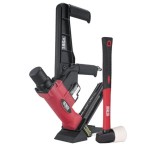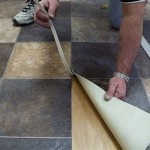Rubber Outdoor Flooring: A Durable and Versatile Solution
Rubber outdoor flooring has become increasingly popular for a wide range of applications, from playgrounds and fitness centers to patios and walkways. Its durability, safety, and versatility make it an ideal choice for both residential and commercial settings. This article will delve into the key features and benefits of rubber outdoor flooring, exploring its suitability for various purposes and highlighting its advantages over traditional flooring materials.
Durability and Longevity
One of the primary advantages of rubber outdoor flooring is its exceptional durability. Manufactured from recycled rubber, typically from tires, this material is highly resistant to wear and tear, making it suitable for high-traffic areas. Rubber flooring can withstand heavy foot traffic, impact loads, and exposure to harsh weather conditions, including rain, snow, and extreme temperatures. Its ability to withstand these elements ensures that it will last for many years, reducing the need for costly replacements.
Furthermore, rubber flooring is naturally resistant to fading, cracking, and peeling, unlike traditional materials like wood or concrete. This resilience makes it a low-maintenance option, as it requires minimal cleaning and upkeep. Its ability to withstand the effects of UV rays and moisture ensures that it will retain its color and appearance for extended periods.
Safety and Comfort
Rubber outdoor flooring prioritizes safety, offering a slip-resistant surface that is ideal for areas where falls are a concern. Its textured surface provides excellent traction, preventing slips and falls, especially on wet or icy surfaces. This feature is particularly important for playgrounds, fitness centers, and walkways, where safety is paramount.
In addition to its slip-resistance, rubber flooring also provides a cushioned and shock-absorbing surface, reducing the impact of falls and minimizing the risk of injuries. This property is beneficial for playgrounds, where children are prone to falls, as well as for fitness centers, where high-impact activities are common. This cushioning effect also makes rubber flooring comfortable to walk on, reducing fatigue and providing a more enjoyable experience.
Versatility and Aesthetics
Rubber outdoor flooring is remarkably versatile, offering a wide range of applications and design options. It is available in various colors, textures, and thicknesses, allowing for customization to suit specific needs and aesthetic preferences. These customization options allow for the creation of unique and visually appealing spaces that enhance the overall design of any outdoor area.
Rubber flooring can be seamlessly integrated into various outdoor settings, from playgrounds and fitness centers to patios, walkways, and even commercial spaces. Its adaptability makes it a suitable choice for both residential and commercial projects, catering to diverse requirements and aesthetics. It can be installed in various shapes and sizes, allowing for the creation of intricate designs and patterns that add visual interest to any outdoor space.
Installation and Maintenance
Rubber outdoor flooring is relatively easy to install, making it a convenient option for both DIY projects and professional installations. It can be installed over a variety of surfaces, including concrete, asphalt, and even grass, making it a versatile solution for different applications. The installation process typically involves preparing the subfloor, laying down a layer of adhesive, and then installing the rubber tiles or rolls. The ease of installation reduces the overall project time and cost.
Rubber flooring is incredibly low-maintenance. It requires minimal cleaning, typically with a simple sweep or hose down to remove dirt and debris. Its water-resistant properties allow for easy cleaning and ensure that it remains hygienic. The material's durability also reduces the need for frequent repairs and replacements, making it a cost-effective flooring solution in the long run.
Environmental Benefits
Rubber outdoor flooring is an environmentally friendly option, as it is made from recycled materials, primarily recycled tires. This reduces the amount of waste going to landfills, contributing to a more sustainable environment. By utilizing recycled tires, rubber flooring helps to conserve natural resources and reduce the environmental impact of tire disposal.
Furthermore, rubber flooring is durable and long-lasting, minimizing the need for frequent replacements. This reduces the overall consumption of resources and energy required for manufacturing new flooring materials. The ability to withstand weather conditions and foot traffic without significant degradation ensures that rubber flooring remains a viable and eco-friendly option for outdoor spaces.

Rubber Outdoor Garden Flooring Tiles Soft Floor Sprung Gym

Outdoor Rubber Flooring

Best Outdoor Playground Rubber Mats Suppliers Flooring In Dubai

Rubber Outdoor Garden Flooring Tiles For Patios 30 Mm

Is Rubber Flooring Waterproof Roll Mat Tile Recommendations

Outdoor Flooring Over Grass Or Dirt Interlocking Tiles

High Density Outdoor Safety Playground Rubber Floor Tile China And

Eco Sport 3 4 Inch Interlocking Rubber Flooring Tiles

Outdoor Rubber Pavers 9 Pack Material Warehouse
Rubber Flooring Best Floors For Gym Garage Playground More Architecture Design
Related Posts








